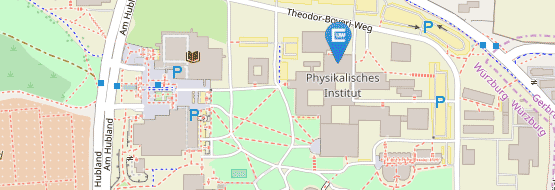A09
Transport properties of Dirac materials
Summary
We aim to study transport properties of Dirac materials. With Dirac materials, we refer to a class of materials, which experience strong spin-orbit interaction. We are particularly interested in electronic excitations that are mobile and characterized by a strong coupling between spin and orbital degrees of freedom. Examples thereof are the one-dimensional (1D) helical edge states of 2D topological insulators, the 2D topological boundary states of 3D topological insulators, and the bulk states of 3D Dirac/Weyl semimetals. These different types of electron liquids in different spatial dimensions are, for instance, realized in HgTe depending on the way it is combined with other materials (e.g. CdTe). Our vision is to identify a phase diagram of transport properties. Typically, transport is limited by scat- tering of electronic excitations with respect to some mechanism. Prominent examples are scattering off impurities, electron-electron scattering, and electron-phonon scattering. Depending on electron density, temperature, and purity of the material, the one or the other mechanism can be dominant, for instance, scattering off impurities at low temperatures, electron-electron scattering at intermediate temperatures, and electron-phonon scattering at high temperatures. Importantly, the strong spin-orbit interaction in Dirac materials substantially affects the type of scattering. In some cases, it makes it robust but not immune against a certain type of scattering. We plan to investigate the transport proper- ties of Dirac fermions in presence of external fields (electric field and magnetic field), inhomogeneities (impurities, electron-hole puddles), and physical boundaries of the system. We are particularly inter- ested in crossover regimes between different scattering mechanisms. Hence, we need to work with a variety of methods (Boltzmann equation, kinetic equation, Landauer transport theory, hydrodynam- ics) to be able to connect different transport regimes. If electron-electron scattering is dominant, the electron liquid might reach the regime of hydrodynamic transport. This regime is of high interest to several groups within the SFB 1170 because it can connect different theoretical areas of research such as AdS/CFT theory and many-body condensed matter physics. We want to put emphasis on the role of magnetic fields on transport properties. Eventually, we aim to functionalize our findings in prototype devices, in which topological protection helps to stabilize a given task, for instance, a switching property of a transistor.


